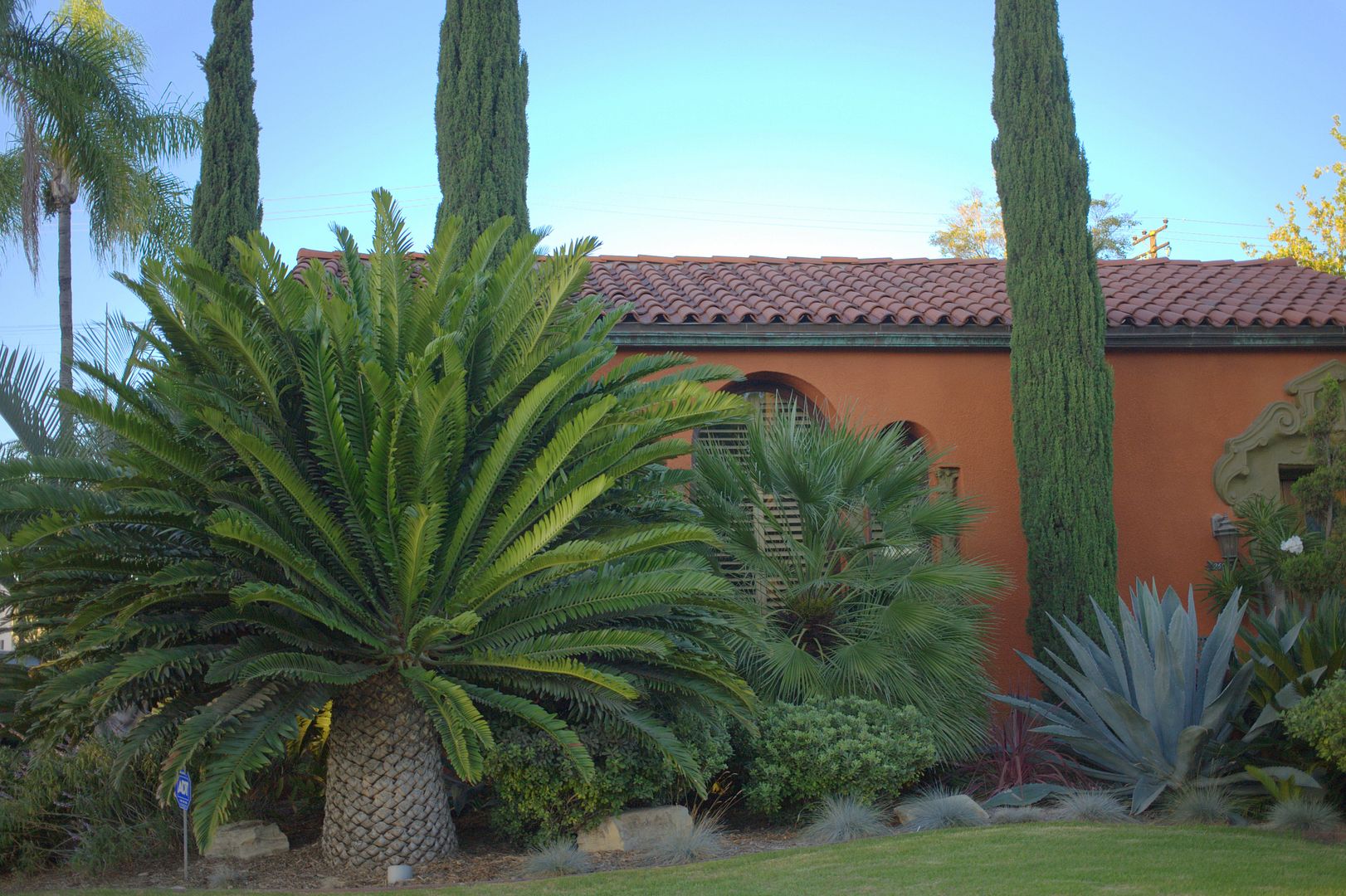
a local Long Beach front garden, zone 10, south-facing exposure
I recently chanced upon a house and garden that I used to drive by a lot more frequently.
Habits change, errands take one in a different direction, and in that unobserved period a cycad suddenly seems to have become enormous.
And cycads, as a rule, don’t do anything suddenly.
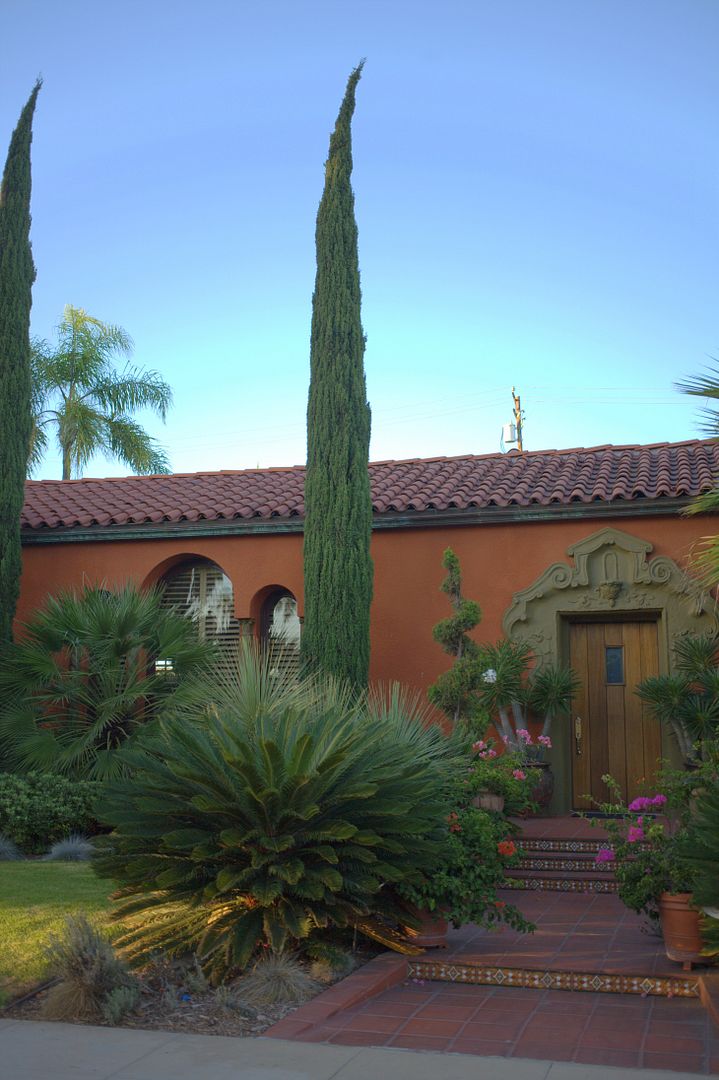
The most frequently seen cycad, Cycas revoluta, known by the misnomer “Sago Palm,” is probably the only cycad I can safely ID.
I think this is a Sago Palm, though I could easily be mistaken. I’ve never seen one this big.
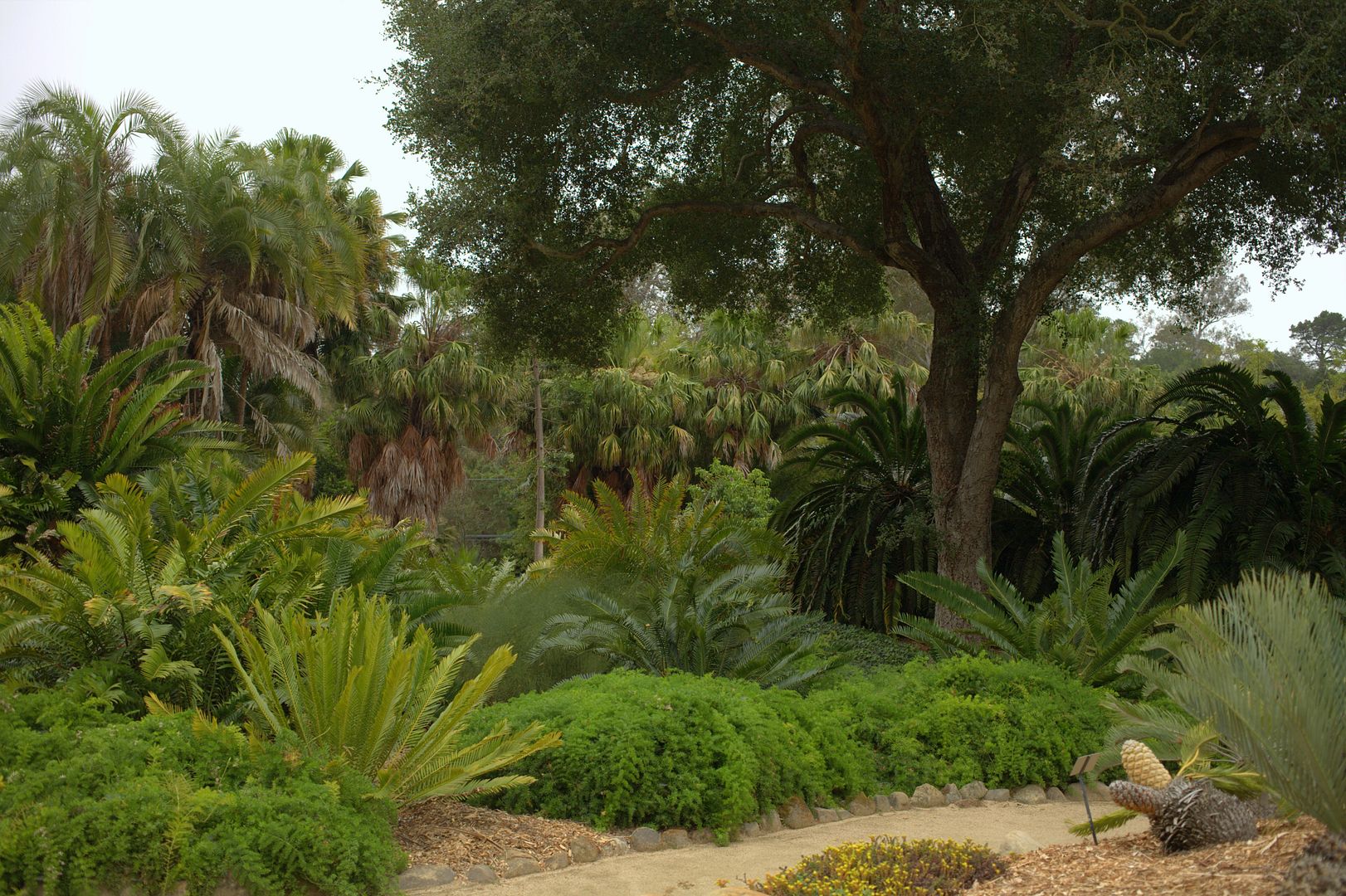
That little garden reminded me of the photos I’d yet to post of the cycad garden at Lotusland for you cycad lovers.
I admire cycads, though I haven’t yet come to love them. I really should make up my mind, because it requires an investment of years, decades, to grow them to these sizes.
I know I certainly wouldn’t refuse a good-sized, robin’s egg blue Encephalartos horridus for a tall container. (Like I’d ever expect to find that gift-wrapped under the Christmas tree.)

Sorry, but I can’t help with IDs of these ancient plants. I know they are very slow growing, so size equates with value, and it’s a huge big deal when they cone.
Ceratozamia, cycas, dioon, encephalartos, lepitozamia, macrozamia — I’d be hard-pressed to tell them apart.
I do know they are one of the most endangered plants in the world.
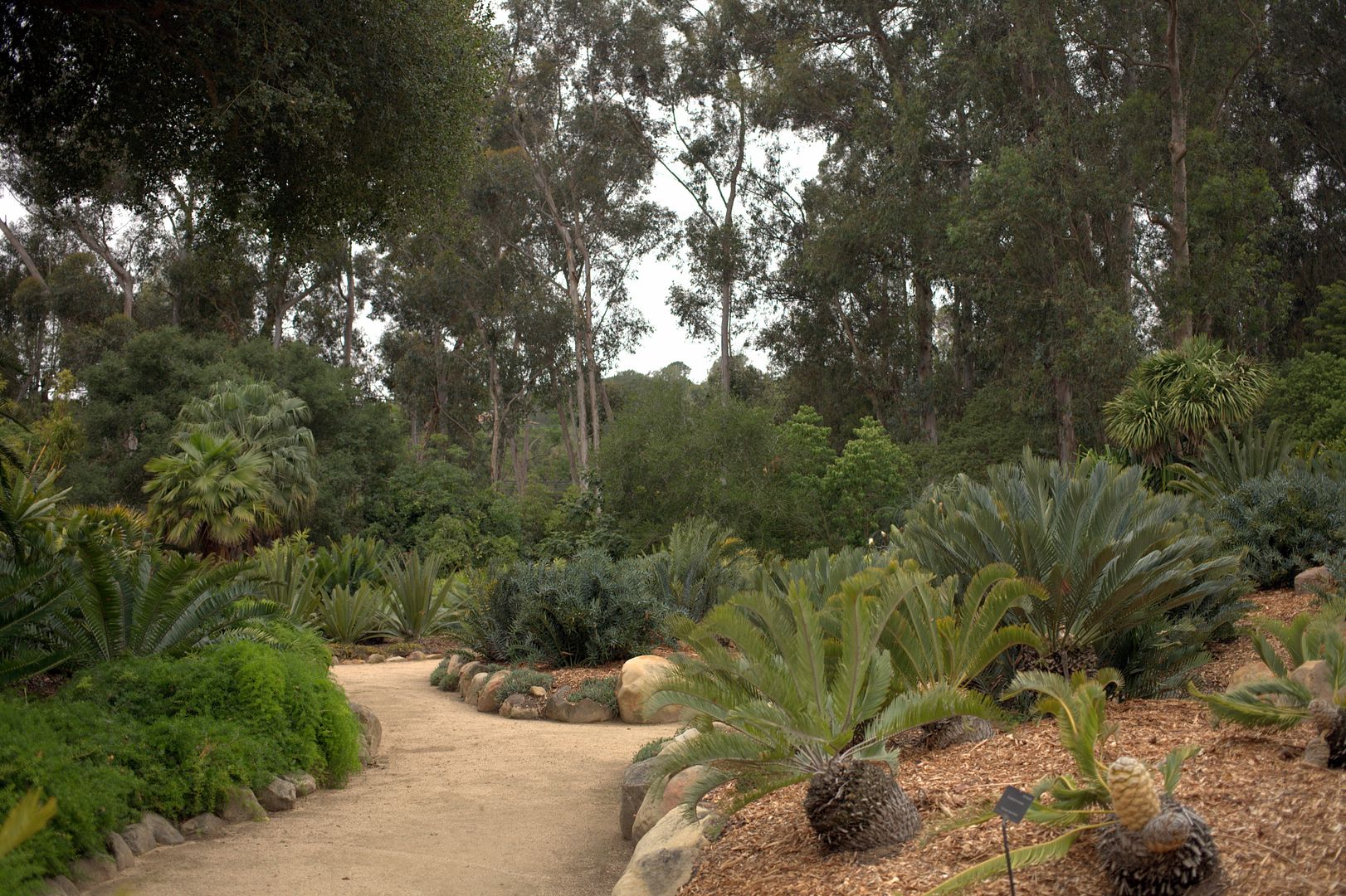
Of course, the best way to learn about a plant is to go to the experts.
And it just so happens that The Cycad Society is holding a “Cycad Day” on October 24, 2015.
Maybe you needed a compelling reason to finally make that trip to West Palm Beach, Florida. If so, now you have one. You’re welcome.
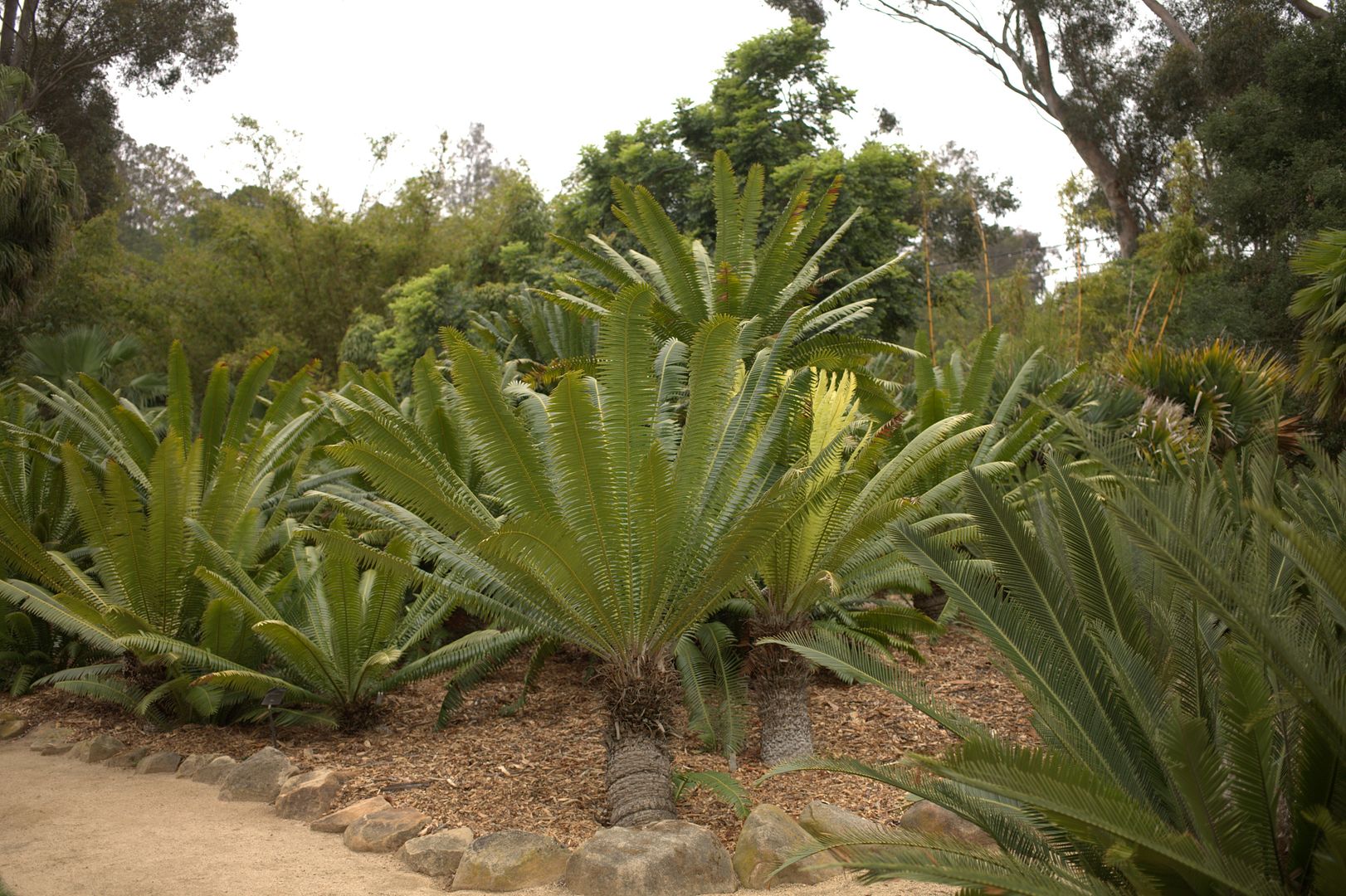
A Southern California source for these plants is The Palm and Cycad Exchange in Fallbrook, California.
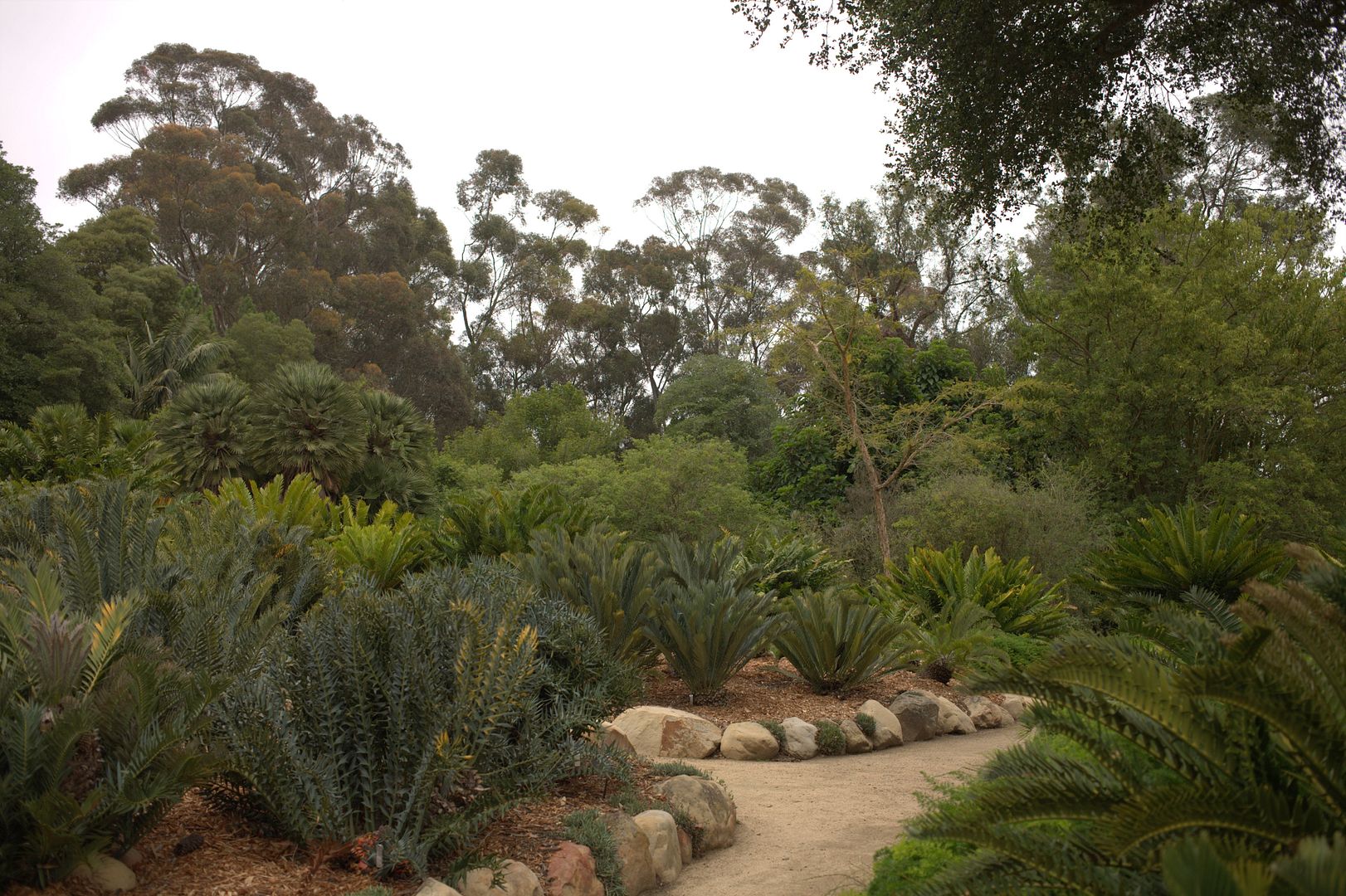
Lotusland’s Rare Plant Auction would be another source.
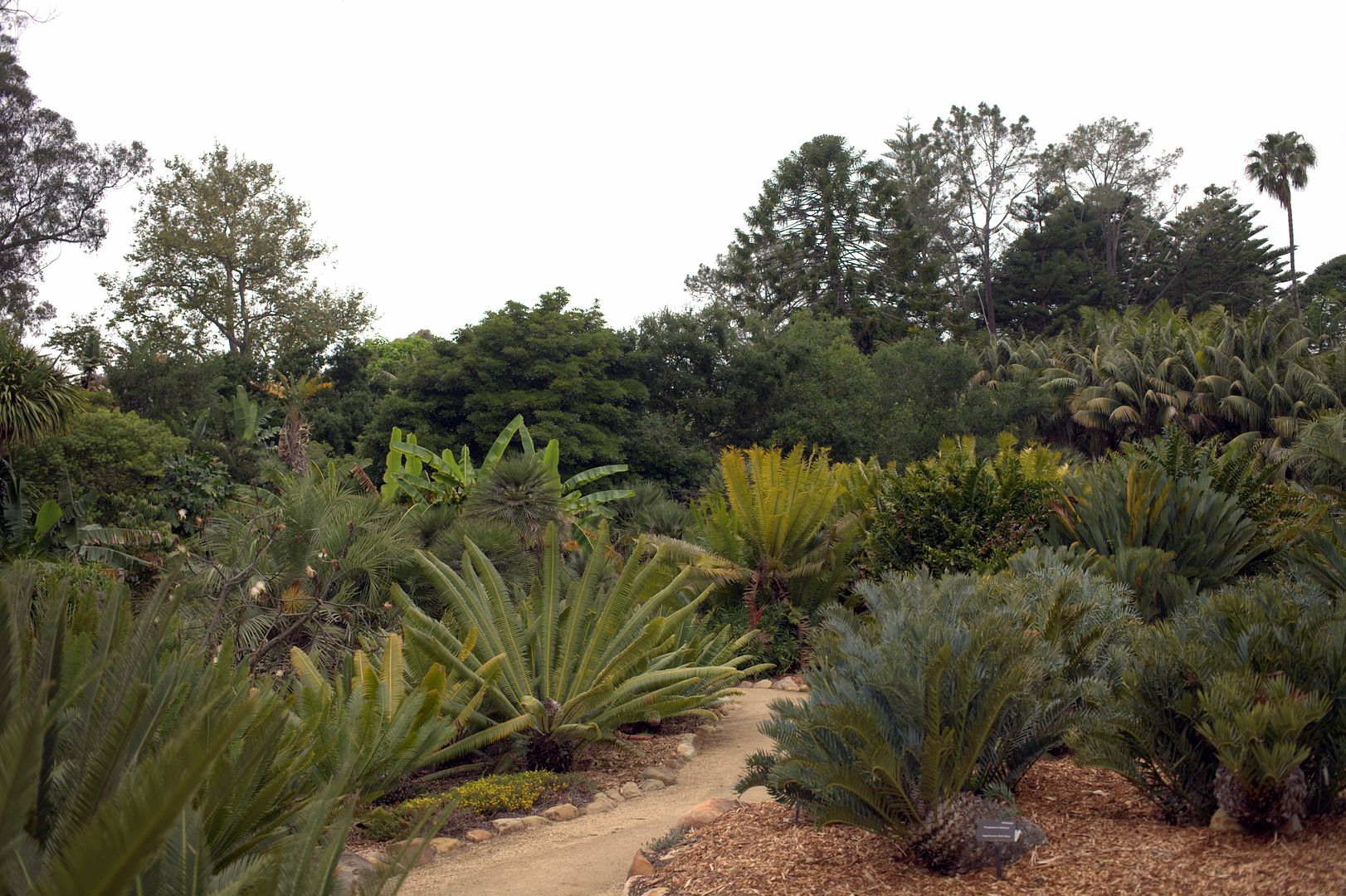
I imagine they turn up at the Huntington’s plant sales too.

Lush and deep green in leaf, some are tolerant of conditions dry enough to suit our native oaks, which don’t appreciate excess summer irrigation.
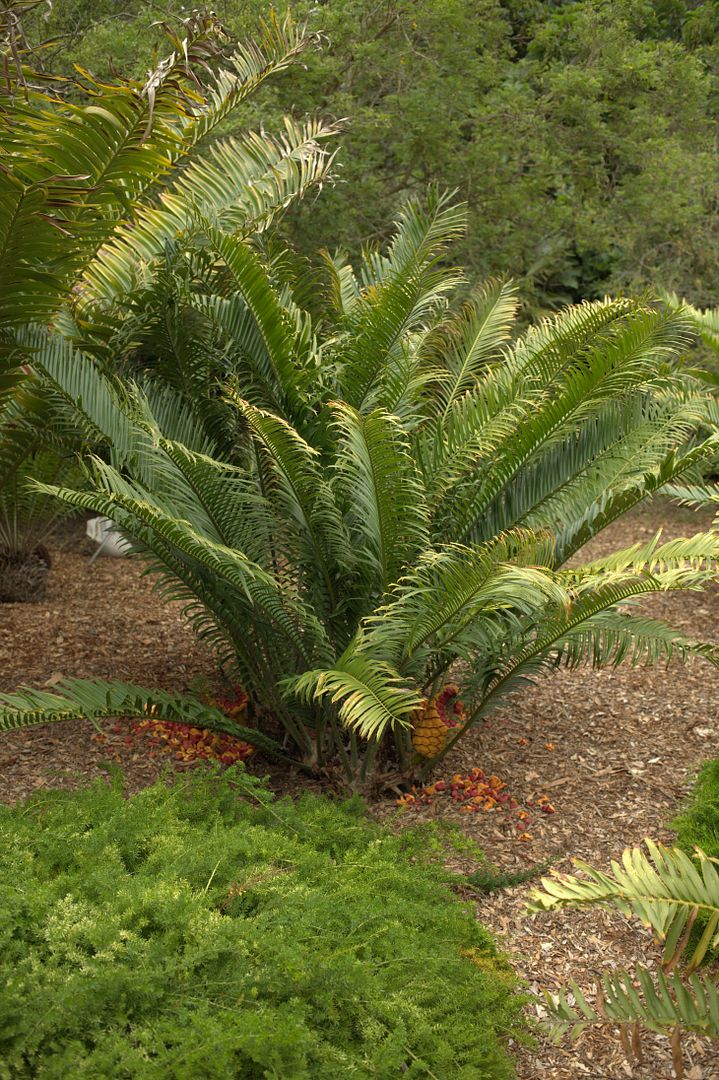
Cycads are members of that small, select group of plants dating to the Mesozoic period called gymnosperms (“naked seed”), whose exposed seed are borne in cones.
Angiosperms, relative newcomers but now 80 percent of plants today, generally develop their seeds via flowers.
Credit cycads’ good looks for making people wild enough about them to devote whole gardens to them in climates that can accommodate their needs.
They hail from tropical and subtropical places, like South and Central America.
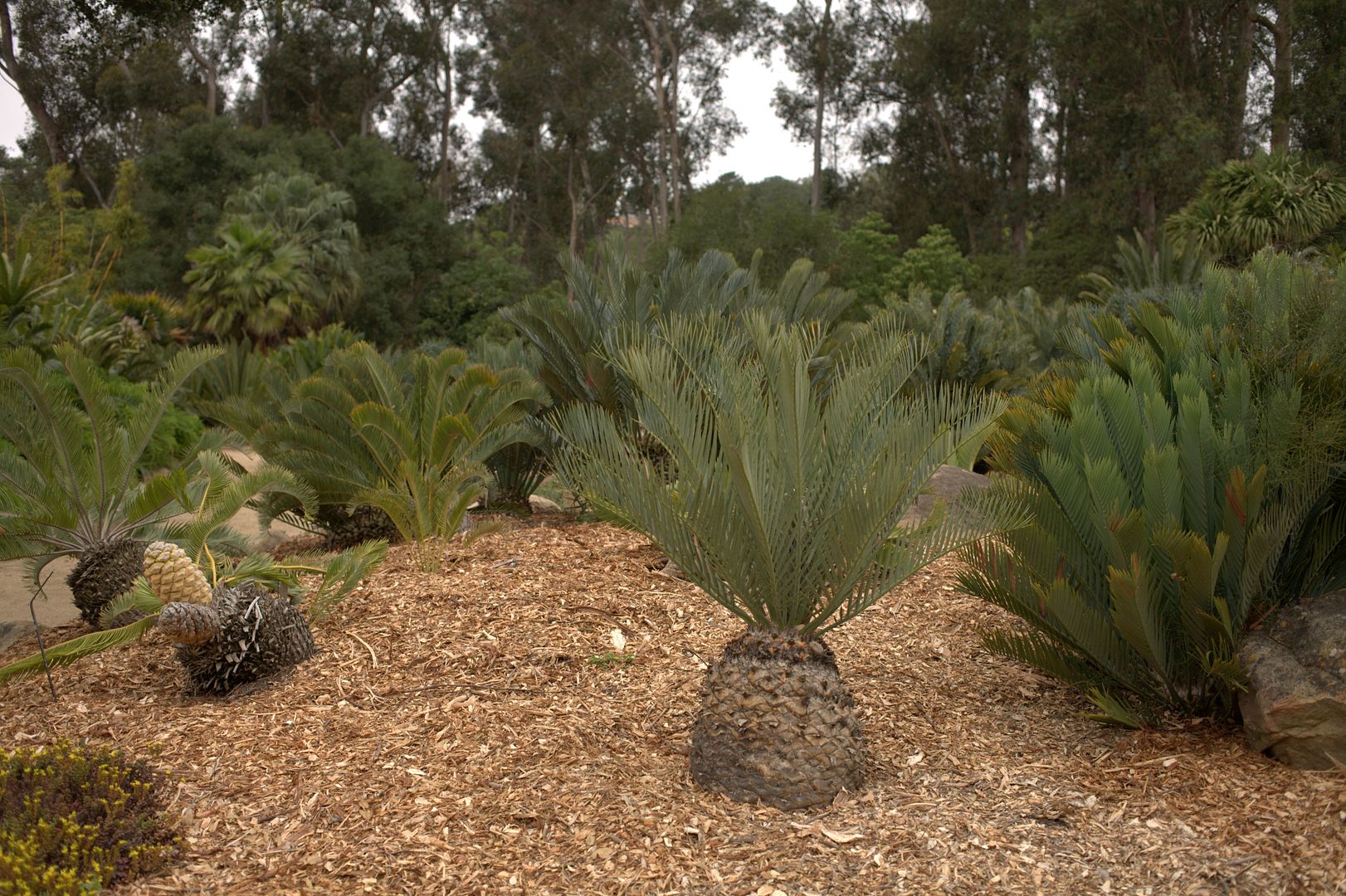
That improbable palminess via stiff geometric leaves on a stout trunk, plus their rarity and unique evolutionary status, are part of what turns ordinary people into devotees.
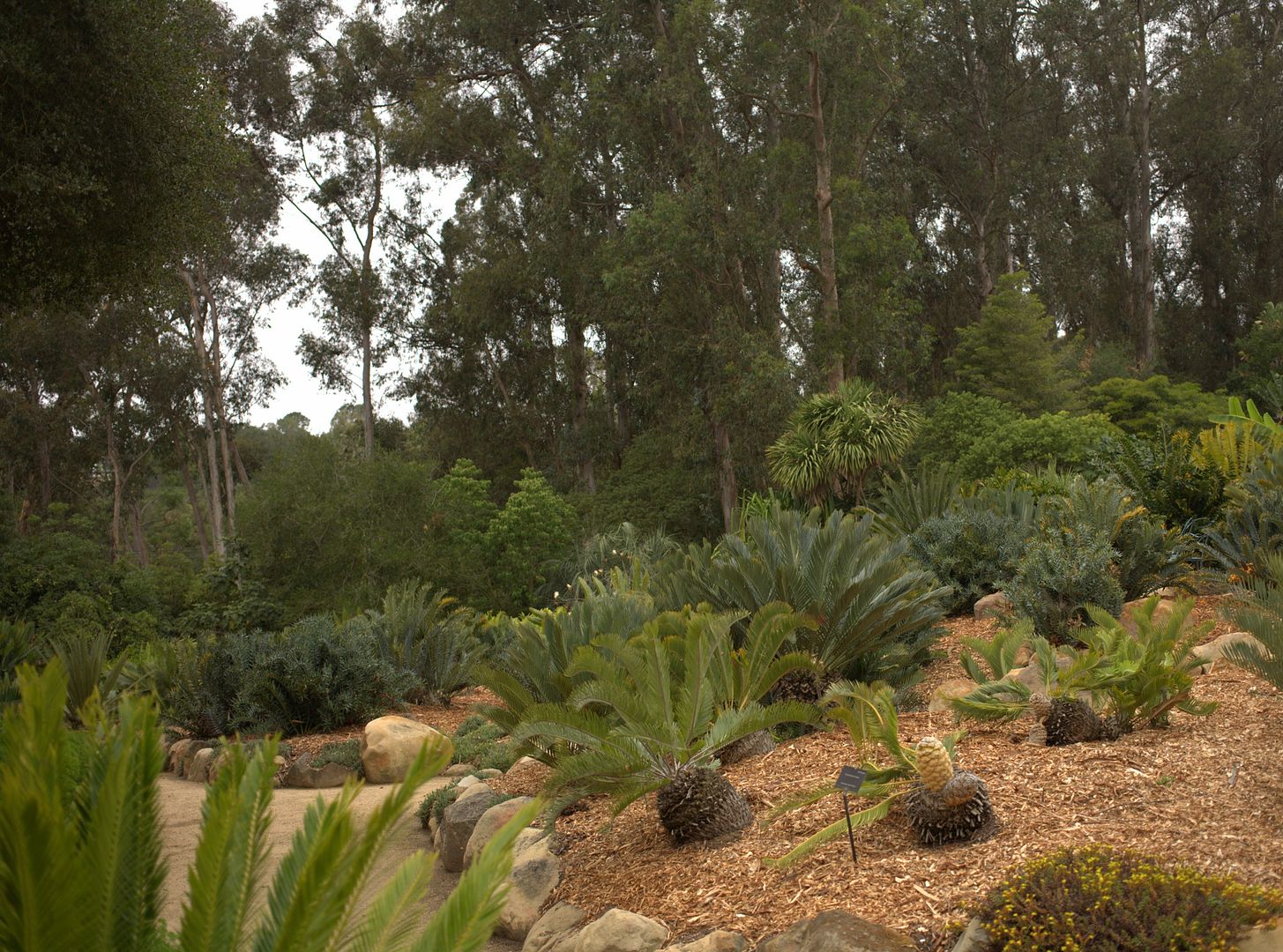

I have a Dioon that grows a new frond about every other year-or less. I decided last year that I was going to collect a few others but have yet to take action on that plan-have to find them first ! Sagos are plentiful and hardy here , but naturally what I really want is the oddball stuff. I’m going to the R. Bancroft next weekend and I think they will occasionally have them in their sales area.
During our one and only visit to Lotusland Andrew struck up a conversation with a fellow working in the cycad area. They talked for quite awhile about how unique they all were. I eavesdropped as I walked around drooling over all the beautiful specimens I wish I could have taken home.
Loree, seeing them massed like that, with quite a lot of them of equal size, used like ground cover rather than specimens, is so Lotusland!
Kathy, I’d love to meet you at the Bancroft for that. I hope you report back on the sale.
That Long Beach Garden does have a magnificent specimen. I share your view of cycads – I admire but am not enamored with them. I did see a dioon at a garden center in Manhattan Beach, though, that took my breath away. It’s purchase would also have cleared out by checking account but as touting it home was also well nigh impossible due to its size, my finances remain intact.
Honestly, Denise, your blog. One minute I know zilch about a plant family, and the next minute I have to find a Dioon edule var. “Rio Verde.” (Dog note: apparently cycad toxicity is a thing. Veterinarian and hazardous-plant lover Geoff Stein [the most excellent palmbob] has a terrific article on this and other plant/pet precautions — here’s the link: http://davesgarden.com/guides/articles/view/499#b )
Yes, E. horridus, want that one. Not going to happen, tho. The tropical garden I visited recently had a fabulous one.
I’ve always wanted to meet palmbob, and wondered if he was at the Succulent Symposium. I was tempted to yell out “is palmbob here?”
I’ve fallen under the cycad spell for sure. Fortunately, the UC Davis Botanical Conservatory propagates quite a few species and I’ve bought some over the years, including a small Encephalartos horridus. It had two flushes this year but it’s still very small. The advantage of buying smaller specimen is that they’re still affordable.
@Kris, that LB garden is such an interesting mix of the old Japanese garden influence in SoCal with a Spanish Colonial house. Unseen in the photos were potted pachypodiums in bloom.
@Oh, Luisa, you’ll probably end up cursing me for getting cycads on your radar!
@Hoov, see Gerhard’s comment. I wouldn’t mind babying a horridus for a decade or so.
@Gerhard, I searched your blog and found one of your cycad posts (http://www.succulentsandmore.com/2012/01/cycad-crazy.html). I was wondering if you’d found any hardy for your climate, and so you have!
Denise, you’ve inspired me to write an update on my cycads. My biggest is an Encephalartos lehmanii. It’s in the ground now and has produced three new leaves this year–in cycad terms, that’s not too shabby! The caudex is 4.5 inches now. E. lehmanii is a beautiful blue cycad, much cheaper and faster than E. horridus.
Sagos are very popular in Austin, and yes, they get pretty big. Like you, I kind of admire them from afar but haven’t brought one home. I’ve been slow to join the palm parade, although now I do have the native Texas Sabal minor plus a couple Med fan palms. Maybe one day, who knows, I’ll bring a sago or dioon home.
I recently purchased a “Dioon” (Cycad) at Home Depot in LakeElsinore,..(Ca.).. was another there. Was $40.00 and is fairly large.
Nice score, Diane!